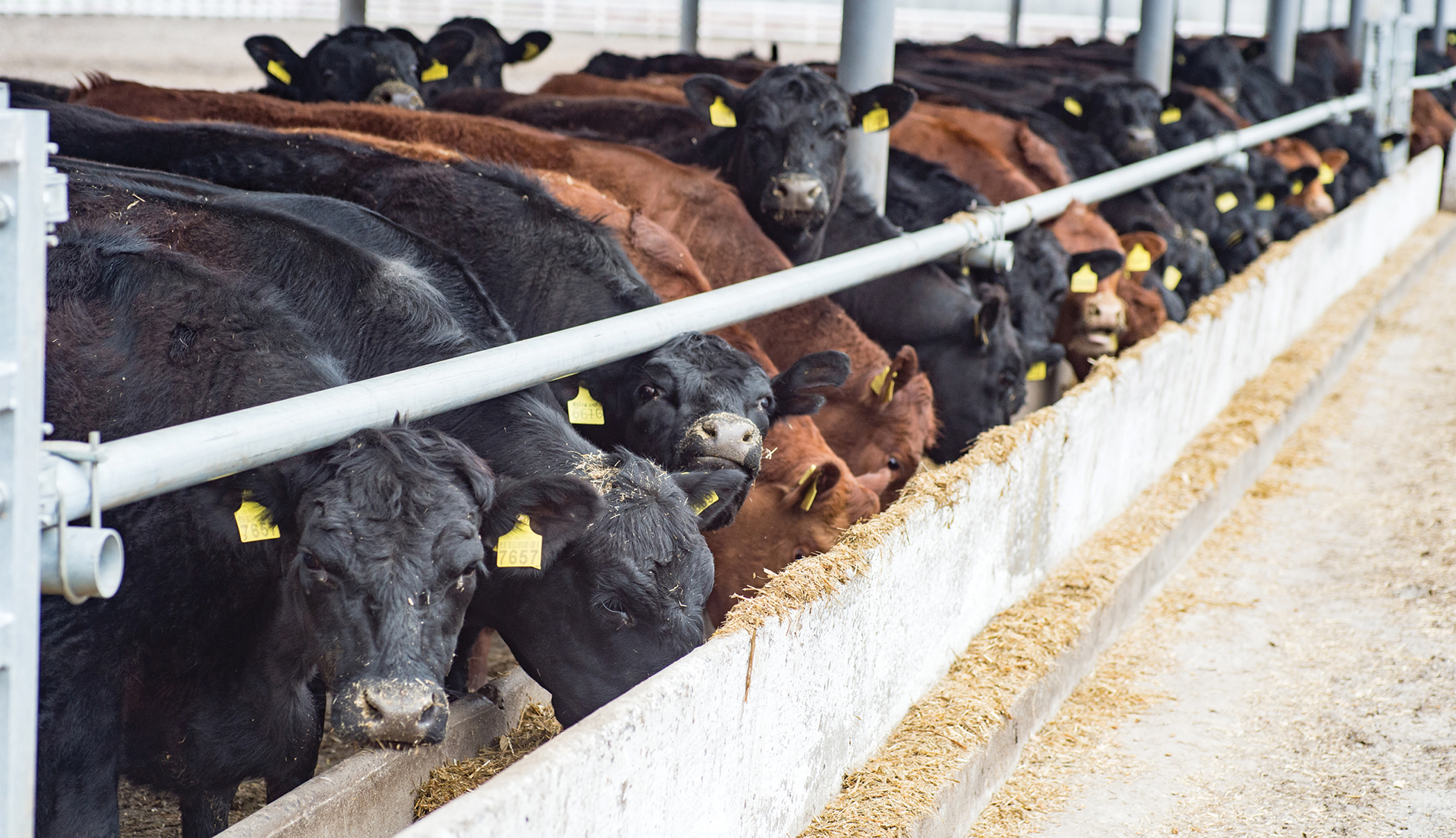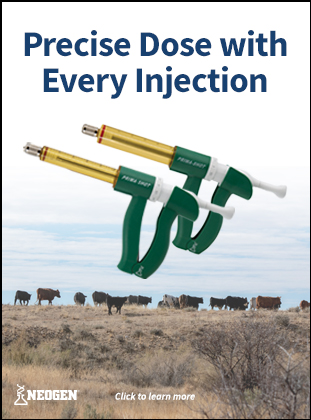Managing Micro-nutrients for Comprehensive Herd Health

Managing Micro-nutrients for Comprehensive Herd Health
By Jaclyn Krymowski
Maintaining adequate nutrition for trace minerals and vitamins can be a challenge whether you feed a finishing diet heavy on grains or use a forage-based system for a cow calf herd.
Whenever a complete diet is formulated, micronutrients – vitamins and minerals – must be assessed. While levels and amounts are a consideration, so are the animal’s stage of production and overall health risks. High quality forages and grains may meet the majority of an animal’s needs, however there are several nutrients that may be insufficient due to the soil and ecosystem of a particular region in which the crop was grown.
Toxicity or deficiency of these nutrients can’t be accounted for with the naked eye. Usually, they are discovered when clinical symptoms develop. Often, a myriad of health issues are expressed, with root causes that are difficult to diagnose. Because of this, it is crucial to go the extra mile to formulate the ration correctly right out the gate.
Vitamins, Minerals and their Functionality
Both vitamins and minerals, in trace and macro amounts, are equally important for maintaining a healthy state and normal functions for the cattle. Even if you work with a qualified nutritionist, it is important to have an elementary understanding of the basics and how vitamins and minerals impact animal health.
Age, size, sex and role in the herd are just a few factors that dictate requirements. For cost effectiveness, a trace blend covering a broad spectrum of nutrients formulated for specific groups, such as pregnant cows or feeder animals, is a good place to start.
The macrominerals are calcium, phosphorus, magnesium, potassium, sodium, chlorine and sulfur. Minerals in trace amounts include iron, zinc, manganese, copper, iodine, cobalt and selenium.
Both sodium and chlorine (salt) play vital roles as well. A deficiency of these elements causes loss of appetite and inefficient weight gains or loss of body weight. Sodium is commonly deficient in diets, but chlorine levels are usually adequate, University of Georgia Professor and Extension Coordinator, Lawton Stewart writes in his bulletin Mineral Supplements for Beef Cattle.
“Magnesium is essential for proper enzyme and nervous system function and for efficient carbohydrate metabolism,” writes Stewart. “Potassium functions in acid-base balance, osmotic pressure and the amount of water retained in the body. Grasses, particularly early lush spring growth, contain adequate amounts of potassium for grazing cattle and supplementation is rarely needed.”
Calcium and phosphorus are the major mineral components of the skeleton, along with playing an important role in other bodily functions.
Sulfur is a part of the essential amino acids methionine and cystine, and is more likely to be in excess, which interferes with copper metabolism.
Selenium deficiency can cause calves to be weak at birth and increases their susceptibility to diseases. Because it is found in the soil, content will vary by region. Because it can be toxic in very small amounts, it is critical to know selenium content that is common for your region and what is being supplied in the diet before offering any additional supplementation.
“Zinc is a component of many enzymes and is important for immunity, male reproduction, and skin and hoof health. Cattle have a limited ability to store zinc and supplementation is always necessary. Zinc absorption is closely tied to copper absorption,” writes Stewart.
Nutrient Vitality
The manner in which micronutrients are fed and normally consumed in the diet impact absorption and availability.
In the Ohio State University publication Mineral Interactions and Supplementation for Beef Cows, the authors cite:
“While supplemental energy and protein may not be needed, it is generally recommended to provide supplemental minerals and vitamins. They have less impact than protein and energy on cow/calf performance and economics, but they should not be overlooked. While supplementation is important, over supplementation of minerals should be avoided to prevent possible environmental problems associated with runoff from waste or application of cattle waste to soil (e.g. phosphorus). Certain minerals can actually be toxic if supplemented in excessive amounts.”
If a trace mineral deficiency is suspected, an evaluation based on average cow body condition score should be conducted and decreases in reproductive performance and/or immune function evaluated. These are a result of energy and/or protein deficiencies rather than trace mineral deficiencies.
Remember that deficiency can vary from animal to animal depending on age and stage of lactation. For example, during lactation, low amounts of either calcium or phosphorus will often reduce milk production.
Stewart stresses that, “A superior milking cow requires three times more calcium than a non-lactating cow.”
There are various applications and ways to provide additional vitamins and minerals and ranchers should strive to find one that is appropriate yet still efficient and cost effective.
As well, dietary supplementation must be consistent for it to work. Supplements must be easy to feed and maintain and amounts may vary depending on season. For example, you may need to feed extra magnesium in the spring to avoid grass tetany.
Commercial mineral supplements are formulated to meet the majority of dietary needs through predetermined amounts of each mineral and then produced in mass quantities to enable consistency. Because they are produced in mass, they are also less expensive.
There are three potential options for supplying minerals to the herd.You can mix minerals into a complete ration, add them to a supplemental feed, or use free-choice mixtures.
Not all modes of supplementation are created equally. If not contained and managed properly, loose, free-choice mineral blends may blow away or brick up with moisture causing waste and insufficient consumption.
Certain block products might be over- or under-palatable causing animals to eat too much, too fast or not enough.
University of Missouri beef specialist Eric Bailey notes in his bulletin Mineral Supplements for Beef Cattle, that adding minerals to a supplemental feed ignores minerals supplied by the forage. Therefore, it is crucial to know the level of intake of the supplement for it to be successful.
The management of freestanding mineral feeders should be considered thoroughly. This includes placement, type of feeder, and number of feeders. Provide one mineral feeder for every 30-50 cows. It is best to place mineral feeders near water, in shaded loafing areas and close to the best grazing areas. A good feeder should be portable and keep minerals dry.
The pivotal role of minerals and vitamins, whether macro or micro by nature, in maintaining the overall health of cattle cannot be overstated. From hoof to poll and from nose to tail, these essential nutrients contribute significantly to the well-being and productivity of the livestock, and thus your bottom line.



